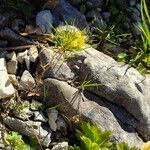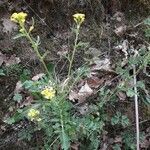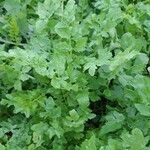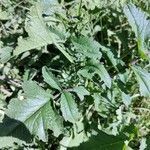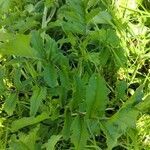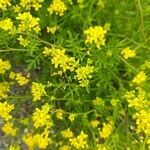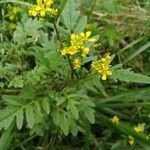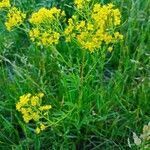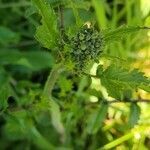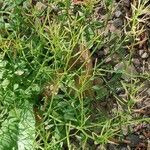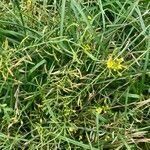Perennials; glabrous or sparsely pubescent. Stems prostrate, decumbent, ascending, or suberect, branched mainly basally, (0.5-)1.5-8(-10) dm. Basal leaves not rosulate; similar to cauline. Cauline leaves petiolate, or (distal) often subsessile; blade deeply pinnatisect, (lobes 3-6 on each side, sublinear, lanceolate, oblong, elliptic, or ovate), (2-)3.5-15(-20) cm × (7-)10-45(-60) mm, base usually not auriculate, rarely minutely auriculate, margins dentate, serrate, subentire, or (distally) pinnatisect, (lobes 1-3 on each side). Racemes elongated. Fruiting pedicels divaricate, straight, (3-)4-10(-12) mm. Flowers: sepals ascending or spreading, oblong, 1.8-3(-3.5) × 0.7-1.5 mm; petals yellow, spatulate or obovate, (2.2-)2.8-5.5(-6) × 1.5-2.5 mm; median filaments (1.5-)1.8-3.5(-4) mm; anthers oblong, 0.7-1 mm. Fruits siliques, straight, usually linear, rarely oblong-linear, 10-20(-25) × (0.7-) 1-1.3(-1.6) mm; valves glabrous; ovules 24-80 per ovary; style 0.5-1(-1.5) mm. Seeds (rarely produced), usually uniseriate, rarely sub-biseriate, reddish brown, ovoid, 0.5-0.9 mm (0.4-0.5 mm diam.), colliculate. 2n = 32, 40, 48.
Erect perennial 2–6 dm, usually branched above, glabrous or sparingly hirsute on the lower part of the stem; basal rosettes present in young plants; cauline lvs slender-petiolate, oblong, deeply pinnatifid or divided into numerous oblong or obovate segments, the lower lvs to 2 dm, more than 2 cm wide, the upper progressively reduced, the segments mostly acute, sharply or angularly toothed or in depauperate pls subentire; pet 4–5 mm, twice as long as the sep; mature pedicels widely divergent or somewhat deflexed, often arcuate, 5–10 mm; frs nearly straight, 10–15 × 1.5 mm, the style 0.5–1 mm; seeds often wanting; 2n=32, 40, 48. Native of Eurasia, intr. in wet soil nearly throughout our range. May–Aug. (Radicula s.)
Glabrous perennial rhizomatous herb. Stems erect, often flexuous, 30-70 cm tall. Lvs variable in shape; margins toothed. Rosette lvs petiolate, auriculate at base, deeply pinnatifid, 4-10-(25) × 2-4 cm. Middle and upper lvs smaller, 1-2-pinnatifid, linear to ovate; lobes narrow-lanceolate to linear, entire or toothed; basal auricles present. Pedicels erecto-patent at flowering, spreading at fruiting, 5-15 mm long. Sepals 2-2.5 mm long. Petals yellow, (3)-4-5 mm long. Silique glabrous, linear, curved, 10-15 × 1-1.5 mm, but often not or poorly developed; valves with median vein weak or 0; style c. 0.5 mm long. Seeds brown, c. 0.6 mm long, finely colliculate, in 2 rows per locule.
A herb. It keeps growing from year to year. It has rhizomes or underground stems and forms stands. It grows 20-50 cm high. The leaves are alternate. The leaves have leaflets or lobes along the stalk. There are 4-7 pairs of lobes. They have teeth along the edge. The flowers are yellow and 1 cm across. The fruit is a narrow slightly curved pod with many seeds.
